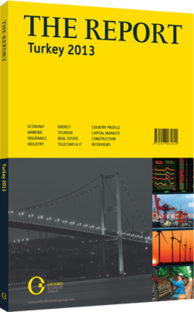Going international: Universities take steps to raise foreign student numbers
Among the many issues attracting the attention of school policymakers in Turkey, one of the most critical is the country’s position in the global higher education market. This has been an area of success over the past several years, as seen by the two-fold increase in international student enrolment at Turkish universities from 15,481 in the 2005/06 academic year to 31,170 in 2011/12. By the year 2023, the government aims to raise this number to 100,000, making the republic one of the largest exporters of educational services globally.
“Turkey’s school system is undergoing a revolution,” Mustafa Aydın, the chairman of the board of trustees of Istanbul Aydın University and the president of the Higher Education Business Council at the Foreign Economic Relations Board, told OBG. “In particular, recent years have seen an intensified focus on internationalisation.”
Pull Factors
The feasibility of this goal will depend on several factors, including the country’s ability to enhance the teaching and learning environment at local universities through regulatory reforms granting academic institutions more autonomy (see overview).
Moreover, local universities themselves must take steps to enhance the perceived value of their qualifications. In the 2012-13 Times Higher Education World University Rankings, no schools in the republic were listed among the globe’s top 200 tertiary institutions. However, a number of local schools were listed in the 200-300 range, including Middle East Technical University, Bilkent University, Istanbul Technical University, Koç University and Boğaziçi University, all of which provide a wide range of courses of study.
Lower Fees
Another factor that influences international students’ decision-making is cost – an area in which Turkish universities believe they have an advantage. While tuition rates in many countries are rapidly escalating, in Turkey annual fees at public institutions typically hover in the $450-1500 range, while those in private “foundation universities” generally fall between $5000 and $14,000. In addition, some foundation schools offer full tuition scholarships and stipends to the majority of graduate students. “Our ability to provide reasonable rates, on top of quality teaching and modern facilities, is a major draw for foreign learners looking to advance their academic and professional careers without breaking the bank,” Umran İnan, the president of Koç University, told OBG.
Local universities eager to court international students also benefit from Turkey’s geographical proximity to major markets – a strength reinforced by the ongoing global expansion of Turkish Airlines. Further, they benefit from the country’s pleasant weather, hospitable culture and wide range of historical sites. “Turkey offers foreign students an unbeatable combination of intellectual and recreational activities,” Aydın said.
As of 2010, students from Turkic-speaking states (Azerbaijan, Kazakhstan, Kyrgyzstan, Turkmenistan and Uzbekistan) accounted for 38% of international students in Turkey, followed by the Balkans (17%) and the Middle East (15%). As Turkey’s trade and investment ties with Middle Eastern nations have grown, there has been a noticeable uptick in foreign students from Muslim-majority countries. In 2010/11, there were over 18,000 students from such countries in Turkey, up from 11,000 in 2000/01.
Helping Hands
Rising international enrolment has also been driven by liberal reforms, including a relaxation of visa policies, increases to foreign student quotas at state schools and lifting the requirement in 2005 that prospective foreign students take the central entrance examination, the scores of which determined placement at a school selected by the Council for Higher Education. In addition, the education authorities have increased the global visibility and attractiveness of the education system by participating in the Bologna Process since 2001 and by joining the EU’s Erasmus Mundus Programme, which has led to a rise in the number of students visiting the country for study abroad.
You have reached the limit of premium articles you can view for free.
Choose from the options below to purchase print or digital editions of our Reports. You can also purchase a website subscription giving you unlimited access to all of our Reports online for 12 months.
If you have already purchased this Report or have a website subscription, please login to continue.

